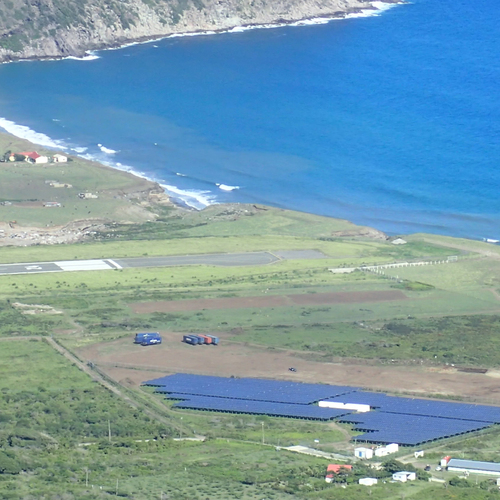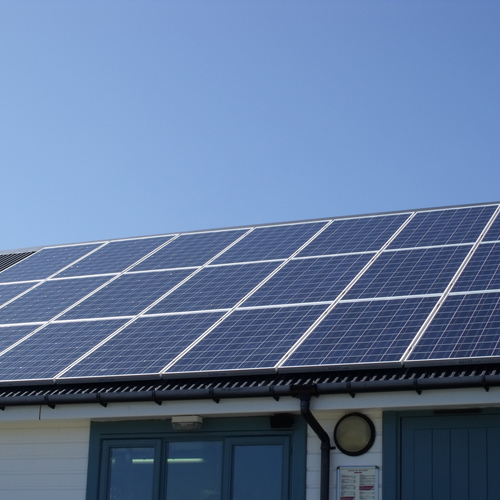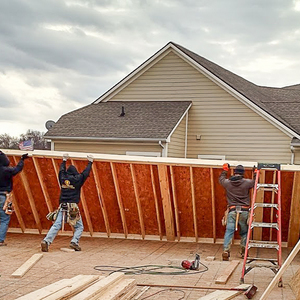
This is a list of some of the most important GBA articles on photovoltaic (solar electric) systems.
If you are looking for an index that spans all categories, with a special focus on “how to” articles, check out this resource page: “How to do Everything.”
-
An Introduction to Photovoltaic Systems
By now, photovoltaic (PV) panels are familiar to most Americans. You’ve seen them on your hand-held calculator, on top of illuminated highway signs, and maybe even on your neighbors’ roofs. With PV systems becoming more common, perhaps you’ve been dreaming of making some homemade electricity. The dream is achievable, as long as you own a sunny patch of lawn or an unshaded south-facing rooftop, and as long as you have a bank balance of several thousand dollars.
-
Photovoltaics, Part 1: Shedding Light on the Basics
In order to understand whether a photovoltaic (PV) system is appropriate for the project you're working on, you really have to understand the metrics and basics of solar electric systems. Phil and I sat down, turned on the mic, and did our best to convey the basic concepts and rules of thumb that most green professionals should know. Of course, this episode lays the groundwork for Part 2, in which we will cover the financial implications of a PV system.
-
Do Grid-Tied Photovoltaic Systems Really Have an Advantage?
Most houses with solar electric panels remain grid-tied, meaning the house is still connected to the utility’s grid even as it has the means to produce its own power. Off-grid houses, which once accounted for the lion’s share of installations, are now in the minority.
-
Installing a Photovoltaic System
[Editor's note: What follows is a compilation of blog entries by Marc Rosenbaum describing the performance of the [no-glossary]photovoltaic[/no-glossary] system installed on the roof of his Massachusetts house.]
-
Just How Big Should a Photovoltaic Array Be?
Kevin Dickson has come across an article about a high-performance house in Massachusetts that has got him wondering whether big photovoltaic systems are overtaking Passivhaus to become the next big trend in high-efficiency building. The house is the work of R. Carter Scott and a design team that included Betsy Pettit and Joe Lstiburek of Building Science Corp., among a number of other experts. It was one of eight in Devens, Mass., that Scott’s company, Transformations Inc., was chosen to build for MassDevelopment, the state’s finance and development authority.
-
Testing a Thirty-Year-Old Photovoltaic Module
In 1980, after living in the woods of Vermont without electricity for five years, I bought my first photovoltaic (PV) module. Responding to a small ad in Mother Earth News, I sent a check to Joel Davidson, a back-to-the-land urban refugee who was facilitating a bulk purchase of PV panels. From his off-grid acreage in Pettigrew, Arkansas, Davidson was selling 33-watt Arco Solar modules for $275 each. Many people ask, “How long do solar panels last?” To mark the 30th anniversary of my first PV module, I decided to climb up on my roof and bring it down for testing.
-
Photovoltaic (Solar Electric) Systems
Making Electricity When the Sun Shines UPDATED 9/27/12
-
PV Systems Have Gotten Dirt Cheap
Something strange has happened to the price of photovoltaic (PV) systems in the last year. PV has gotten dirt cheap. Honestly, it's gotten cheaper faster than our office has realized, and we try to stay up on these things. Worse, we've realized we haven't been making proper recommendations to our clients because of it. It's also shifting some of the underpinnings of our typical design analysis in strange ways, and it looks like there are some unexpected consequences we haven't yet figured out.
-
A Caribbean Island Transitions to PV
Most of the electricity generated in the U.S. comes from power plants that burn coal or natural gas. Although an increasing percentage of our electricity comes from photovoltaic (PV) arrays and wind turbines, there are two problems with these renewable energy sources. First, electricity generated by PV arrays or wind turbines is still somewhat more expensive than electricity generated by fossil fuel plants (although the cost of solar and wind continue to drop).
-
Making Room for a PV Array
UPDATED on December 4, 2016 with PV system production data for the first year of system operation. Compared to a photovoltaic system, a solar hot water system yields very little energy per dollar invested. I presented that argument in a 2012 article called “Solar Thermal Is Dead.” Two years later, in 2014, an economic comparison between these two solar technologies showed a stronger tilt than ever before in favor of PV, leading me to write a follow-up article called “Solar Thermal Is Really, Really Dead.”
-
The Big Allure of Cheap PV
Until now, Patrick McCombe has believed that improvements to the envelope of his home should come before an investment in photovoltaic panels. Now he's weighing a deal that seems too good to pass up. McCombe lives in Connecticut (he's an associate editor at Fine Homebuilding magazine) and he recently attended an informational meeting sponsored by an organization working to lower the cost of PV. Panels could be purchased or leased, but the bottom line was that with federal and state incentives, McCombe could buy a 10-kilowatt array for $15,000.
-
PV Systems That Divert Surplus Power to a Water Heater
In some U.S. states, electric utilities refuse to offer a net-metering agreement to owners of PV systems. Instead of a net-metering agreement — an arrangement that provides a homeowner with a one-for-one credit for every kilowatt-hour (kWh) of PV-generated electricity fed into the grid — these utilities want to sell electricity to users for 12 cents or 15 cents per kWh, while buying it back for only 4 or 5 cents per kWh.
-
Sometimes, It’s Cheaper to Install PV Than More Insulation
There’s an age-old question of how much insulation to install in our homes. Conventional wisdom says to add more until the “payback” for the added insulation isn’t worth it — until the energy savings that will result from the insulation doesn’t pay back the cost of that insulation quickly enough. Energy and environmental consultant Andy Shapiro, of Energy Balance, Inc. in Montpelier, suggests a different approach: basing that decision on the cost of a solar electric system.
-
Energy Predictions vs. Energy Performance
Editor's note: Kent Earle and his wife, Darcie, documented construction of their superinsulated house on the Canadian prairies in a blog called Blue Heron EcoHaus. GBA published a number of those posts in a series that wrapped up last year. Recently, Kent wrote to say he has been monitoring energy use at the house and offered this followup.
-
Solar and Hot Water at the Airport House
Editor’s note: This is one of a series of guest blogs by Reid Baldwin about the construction of his house in Linden, Michigan. For a list of previous blog posts on GBA by Reid Baldwin, see the “Related Articles” sidebar below. You can read his entire blog here.
-
Solar Power Can Cut Consumers’ Bills and Still be Good for Utilities
The cost of solar energy continues to fall, so it is no surprise that more people are adopting solar. This rapid growth of rooftop solar, however, has led many electric utilities to try to apply the brakes. A number have lobbied to change the net-metering policies that credit consumers for the excess solar power they generate. Does this make sense?
-
Urban Rustic: Installing a Solar Electric System
Editor's note: This post is one of a series by Eric Whetzel about the design and construction of his house in Palatine, Illinois, a suburb of Chicago. The first blog in his series was called An Introduction to a New Passive House Project; a list of Eric's previous posts appears below. For more details, see Eric's blog, Kimchi & Kraut.































